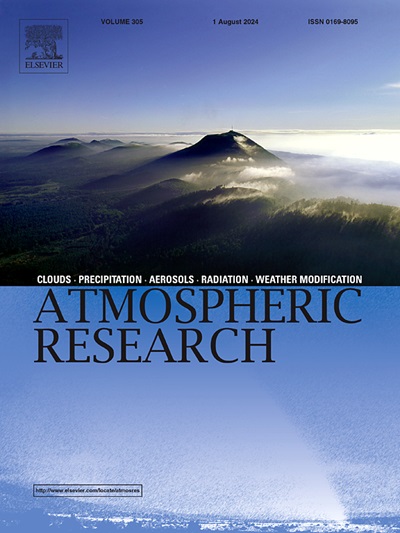不同El Niño事件对青藏高原冬季降雪的影响
IF 4.5
2区 地球科学
Q1 METEOROLOGY & ATMOSPHERIC SCIENCES
引用次数: 0
摘要
El Niño-Southern涛动(ENSO)和青藏高原降雪是影响气候年际变率的关键因子,ENSO与青藏高原降雪的关系表现出年代际变率。然而,在2000年前后,El Niño事件的类型发生了变化,目前尚不清楚El Niño事件类型的变化是否会影响与降雪的关系。本文利用HadISST和ERA5再分析数据集以及数值实验,研究了El Niño事件与青藏高原冬季降雪的关系。结果表明,东太平洋El Niño (EPE)事件通常与青藏高原冬季正异常相关,而混合型El Niño (MPE)事件与负异常相关,而中太平洋El Niño (CPE)事件的冬季降雪响应具有相当大的不确定性。EPE事件与东亚冬季槽的异常加深有关,而MPE事件通常诱发北太平洋到青藏高原的异常大气环流波型,从而改变青藏高原冬季温度结构和冬季降雪。本研究强调了EPE和MPE事件对TP降雪的影响,并提供了对潜在大气过程的见解,为未来研究其更广泛的气候影响奠定了基础。本文章由计算机程序翻译,如有差异,请以英文原文为准。
Impacts of different El Niño events on winter snowfall over the Tibetan Plateau
The El Niño-Southern Oscillation (ENSO) and snowfall over the Tibetan Plateau (TP) are key factors influencing interannual climate variability, and the relationship between ENSO and TP snowfall exhibits interdecadal variability. However, the types of El Niño events have undergone changes around 2000s, and it remains unclear whether these changes in El Niño event types influence the relationship with snowfall. In this study, we examine the relationship between El Niño events and winter snowfall over the TP using HadISST, and ERA5 reanalysis datasets as well as numerical experiments. Our results show the eastern Pacific El Niño (EPE) events are typically linked to positive winter snowfall anomalies over the TP, while the mixed-type El Niño (MPE) events are associated with negative anomalies, whereas the response of winter snowfall during the central Pacific El Niño (CPE) events exhibits considerable uncertainty. EPE events are associated with an anomalous deepening of the East Asian winter trough, while MPE events typically induce an anomalous atmospheric circulation wave pattern from the North Pacific to the TP, thereby altering the winter temperature structure and winter snowfall over the TP. This study highlights the impact of EPE and MPE events on TP snowfall and provides insights into the underlying atmospheric processes, offering a foundation for future research on their broader climatic implications.
求助全文
通过发布文献求助,成功后即可免费获取论文全文。
去求助
来源期刊

Atmospheric Research
地学-气象与大气科学
CiteScore
9.40
自引率
10.90%
发文量
460
审稿时长
47 days
期刊介绍:
The journal publishes scientific papers (research papers, review articles, letters and notes) dealing with the part of the atmosphere where meteorological events occur. Attention is given to all processes extending from the earth surface to the tropopause, but special emphasis continues to be devoted to the physics of clouds, mesoscale meteorology and air pollution, i.e. atmospheric aerosols; microphysical processes; cloud dynamics and thermodynamics; numerical simulation, climatology, climate change and weather modification.
 求助内容:
求助内容: 应助结果提醒方式:
应助结果提醒方式:


